Suppression of the inflammatory process is an important aspect in the treatment of rheumatoid arthritis. Eliminating inflammation reduces pain. However, non-steroidal anti-inflammatory drugs do not cure the disease. Other medications are usually used to treat rheumatoid arthritis in combination with non-steroidal anti-inflammatory drugs.
In the case of osteoarthritis, there is no need to use an anti-inflammatory agent. Because with osteoarthritis (usually a painful process), minor inflammation occurs. In fact, the inflammatory process develops only at some stages of osteoarthritis.
There are two main categories of anti-inflammatory drugs used in arthritis. Each drug contains cortisone or cortisone-like substances, such as prednisone, synthesized from human hormones. These substances effectively cope with inflammation. But with prolonged use, cortisone causes pronounced side effects.
Another category of anti-inflammatory drugs does not contain cortisone. These medicines are called non-steroidal anti-inflammatory drugs. They are represented by the most widely used drugs in the world (aspirin, ibuprofen) and many more powerful anti-inflammatory drugs, available only by prescription.
These drugs are divided into two groups: traditional non-steroidal anti-inflammatory drugs, such as ibuprofen and naproxen, and newer drugs - COX-2 inhibitors - celecoxib and rofecoxib.
How do non-steroidal anti-inflammatory drugs work?
Nonsteroidal anti-inflammatory drugs perform two main functions.
Some non-steroidal anti-inflammatory drugs, such as aspirin, buffered aspirin, and ibuprofen, are prescribed to relieve pain. In the case of osteoarthritis to reduce the intensity of pain, you can take them in small doses. These painkillers also eliminate other unexpressed pains, such as headaches and menstrual cramps.
In the case of rheumatoid arthritis, non-steroidal anti-inflammatory drugs help reduce inflammation and its pathological effects. Despite the small differences between the groups of these funds, they equally affect the inflammatory process. Nonsteroidal anti-inflammatory drugs block the secretion of an enzyme (cyclooxygenase), which enhances the secretion of prostaglandins (chemical compounds in the blood and tissues that are pathogenetic in the process of inflammation).
Since different patients have differences in the course of arthritis, the selection of non-steroidal anti-inflammatory drugs is individual. Those drugs that are suitable for a particular person may not be suitable for other patients, and vice versa. Therefore, these drugs are selected based on the following criteria:
- Age and Health
- Frequency of medication
- The body's response to treatment
- The interaction of other drugs with non-steroidal anti-inflammatory drugs
- Cost of drugs
In the arsenal for the treatment of arthritis, there are many drugs (prescription and over-the-counter). Like all non-steroid drugs, they should be taken with all the criteria, even aspirin. These drugs can cause severe and potentially dangerous side effects - stomach ulcers and bleeding from ulcers.
Aspirin and its derivatives are present in three forms - clean, buffered and coated. Buffered and coated forms reduce potential inflammation of the gastric mucosa and acidity. A small dose of aspirin is usually sufficient for daily use (two 325 mg tablets every 4 hours). This is the usual dose for osteoarthritis.
Currently, aspirin is rarely prescribed to treat arthritis pain. But when applying it for rheumatoid arthritis, it is necessary to maintain a constant level of aspirin in the bloodstream (up to 12 regular aspirin tablets per day). Such an amount of the drug can not be used to eliminate headaches.
In addition to aspirin and similar drugs, there are three other non-steroid drugs available on the market. They are an alternative in case of impossibility of taking aspirin.
- Ibuprofen (Advil, Motrin, etc.)
- Ketoprofen (Cannon)
- Sodium Naproxen (Olive)
The caveats for these drugs are the same as for aspirin. These drugs can be effectively used in case of unexpressed pain without consulting a doctor. In the treatment of rheumatoid arthritis, a doctor's consultation is advisable.
Some nonsteroidal drugs should be taken according to certain rules: you can not take several tablets at once; it is permissible to take only one or two tablets per day.
Ultimately, taking these non-steroidal drugs is convenient, because you can forget about the regimen of taking aspirin, but medical recommendations should be followed.
Single-use nonsteroidal drugs:
- Sodium Diclofenac (Voltaren)
- Ketoprofen (Oruval)
- Nabumeton (Relafen)
- Naproxen (Naprelan)
- Etodolac (Lodin)
- Piroxicam (Felden)
- Meloxicam (Mobic)
In the case of the use of other non-steroidal drugs, it is necessary to take more than one tablet. In this case, you cannot use the same number of tablets (as when taking aspirin). These drugs are listed below:
- Sodium diclofenac and misoprostol (Artrotek) - one tablet 2-3 times a day;
- Ketoprofen (Cannon) - one capsule 2-4 times a day;
- Naproxen (naprosin) - one tablet 2 times a day;
- Phenoprofen (Nalfon) - 1-2 capsules 3-4 times a day;
- Sulindak (Clinoril) - one tablet 2 times a day;
- Flurbiprofen (Ansad) - one tablet 2-4 times a day;
- Metindol (Indocin) - one capsule 2-3 times a day;
- Tolmethine (Tolectin) - one tablet 3 times a day.
These and other drugs provide the full spectrum of anti-inflammatory drugs. If it is not possible to take aspirin, other drugs are prescribed.
D.Handep
"Anti-inflammatory drugs for arthritis" and other articles from the section
Drug therapy is the main treatment for rheumatoid arthritis in the active course of the disease. Preparations for the treatment of arthritis can achieve remission - a decrease in the activity of the pathological process.
The choice of drugs for rheumatoid arthritis
The choice of drugs for rheumatoid arthritis depends on the intensity of the disease and the degree of damage to the joints. Most often, experts prescribe an increased dose of medications up to eliminating the symptoms of the disease. When choosing medicines, it is important to find such a medication that could remove inflammatory processes as quickly as possible, but without causing side effects.
In order to track complications while taking drugs for arthritis of the joints, patients should be monitored by specialists and regularly take blood tests. If abnormalities are found and some side effects develop, they should be eliminated by reducing the dosage or by replacing with another drug for the treatment of rheumatoid arthritis.
In the treatment of this joint disease, drugs belonging to several pharmacological groups are used:
- non-steroidal anti-inflammatory drugs - NSAIDs;
- medicines that affect the course of rheumatoid arthritis;
- biological response modifiers;
- glucocorticoids;
- analgesics.
Recently, new generation drugs have been used in the treatment of rheumatoid arthritis.
Anti-inflammatory drugs for rheumatoid arthritis of the joints
Anti-inflammatory drugs for arthritis are prescribed to eliminate pain syndrome and removal of a minor inflammatory process. However, you should know that NSAIDs are not able to eliminate the effects of joint destruction as a result of the development of this disease. In addition, for NSAIDs to have a therapeutic effect, they need to be taken regularly and strictly follow the dosages recommended by the specialist.
Before the anti-inflammatory effect of drugs on damaged joints appears, 2-4 weeks have to pass from the start of medication. If the selected medication does not eliminate all the symptoms of the inflammatory process, the specialist may increase the dosage or prescribe another drug for the treatment of joint arthritis, belonging to the same group of medicines.
Many NSAIDs cause serious side effects.
Taking these medicines may cause the following side effects:
- gastrointestinal bleeding;
- fluid retention in the body;
- the occurrence of a risk of developing cardiovascular diseases.
Taking NSAIDs needs to be measured possible risks complications and therapeutic effect of drugs.
The best drugs for rheumatoid arthritis make up this list of non-toxic medicines:
Anti-arthritis drugs: Diclofenac and Ibuprofen
Diclofenac It has a powerful anti-inflammatory and analgesic effect, has a moderate antipyretic effect. When treating arthritis, it reduces joint pain at rest and during movement, relieves morning stiffness and swelling of the joints. A strong therapeutic effect is achieved after 1-2 weeks from the start of treatment of the disease with this drug. It is produced in the form of a gel for external use, tablets and in the injectable form, indicated at the initial stages of the development of rheumatoid diseases.
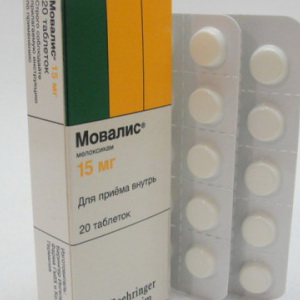
Ibuprofen it is prescribed for articular forms of arthritis with minimal or moderate severity of the disease. The therapeutic effect occurs very quickly, already on 2-3 days of using Ibuprofen, you can notice a decrease in the activity of the inflammatory process in the joints. The disadvantage of this non-steroidal anti-inflammatory drug for arthritis is that the therapeutic effect is observed only while taking the drug.
With arthritis with a high activity of the inflammatory process in the joints, non-steroid drugs should be combined with hormonal drugs - glucocorticosteroids. Patients with rheumatoid arthritis can take Ibuprofen constantly when severe pain syndromes occur, but prolonged continuous use of this medication is possible only during an exacerbation of the disease.
This anti-rheumatoid arthritis drug is prescribed in a dosage of 800 mg three times a day after meals. When taking Ibuprofen, you should remember about its irritating effect on the mucous membrane of the gastrointestinal tract. Such a negative effect of the drug can be manifested by heartburn, nausea, the occurrence of pain in the epigastric region.
Ibuprofen has the following contraindications:
- erosive and ulcerative lesions of the digestive tract;
- hypersensitivity to the drug;
- impaired functioning of the liver and kidneys;
- hematopoiesis.
Medicines for the treatment of rheumatoid arthritis: Ketoprofen and Movalis

Ketoprofen - This is another effective drug for rheumatoid arthritis, which has analgesic, anti-inflammatory and antipyretic effects. In addition, Ketoprofen eliminates platelet adhesion.
The drug reduces pain in the joints at rest and during movement, relieves morning stiffness and swelling. Its use allows a person suffering from rheumatoid arthritis to increase the range of motion without feeling pain in the joints.
Ketoprofen is prescribed for prolonged symptomatic treatment this inflammatory process, with chronic arthritis, arthrosis with severe pain. In the form of tablets, the drug is used for long-term treatment of the inflammatory process. In the form of a gel, Ketoprofen is used for uncomplicated injuries.
At the beginning of the treatment of arthritis, Ketoprofen is prescribed in high doses - 300 mg per day with meals. 2-3 doses of the drug are recommended per day. For maintenance therapy, 150-200 mg per day is prescribed during meals.
Ketoprofen has the following contraindications:
- peptic ulcer of the stomach and duodenum during exacerbation of the disease;
- severe violations in the functioning of the liver;
- kidney disease
- third trimester of pregnancy;
- age up to 14 years;
- breast-feeding;
- dermatoses, eczema;
- hypersensitivity to the drug.
Sometimes, side effects such as nausea, vomiting, abdominal pain, diarrhea, and gastrointestinal bleeding can occur in patients while taking the medicine. In such cases, the medication should be suspended and another medication from this pharmacological group prescribed.
 Movalis. The active substance of the drug is meloxicam. It has a strong anti-inflammatory, analgesic and antipyretic effect. Movalis blocks the action of a special enzyme that takes part in the development of the inflammatory process in the joints.
Movalis. The active substance of the drug is meloxicam. It has a strong anti-inflammatory, analgesic and antipyretic effect. Movalis blocks the action of a special enzyme that takes part in the development of the inflammatory process in the joints.
The drug can have a negative effect on all organs and systems. Most often, with an overdose or intolerance to the drug, the digestive system suffers - nausea, vomiting, diarrhea occurs. Often the respiratory system is disrupted, patients may complain about the occurrence of asthma attacks. Possible and allergic reactions - itching, rash, urticaria, stomatitis.
More serious drugs that can cause serious side effects are Indomethacin, Piroxicam, Ketorolac.
Pain relievers for arthritis
Anesthetics for arthritis are used to eliminate the severe pain syndrome that occurs with joint inflammation.
In pharmacology, several types of analgesics are known:
- based on acetaminophen;
- opioid analgesics;
- combination agents, which include acetaminophen and opioid.
Acetaminophen-based arthritis medications are used to treat mild pain and discomfort. In medicine, in the treatment of joint diseases, Tylenol is widely used - a medication based on acetaminophen. Opioid and mixed analgesics are prescribed for people with arthritis for severe pain.
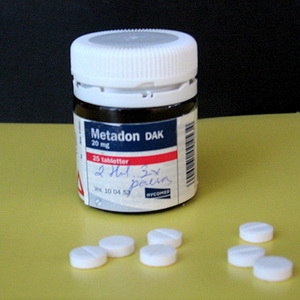
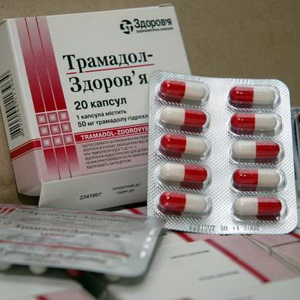
These pain medications include Methadone, Tramadol,

Morphine.
Opioids are synthetic narcotic drugs that, when ingested, bind to receptors in the cells of the spinal cord, brain, and gastrointestinal tract. They block the centers of pain, excluding the transmission of pain impulses. In many cases, painkillers belonging to the opioid group are much more effective than acetaminophen-based drugs, but they cause many side effects. Such drugs are taken in two ways: either on demand, when severe pain occurs, or on a schedule, withstanding certain periods of time.
Non-narcotic analgesics, the active substance of which is acetaminophen, act in a different way. These medications inhibit the production of certain enzymes involved in the formation of prostaglandins. It is known that these substances are the cause of pain.
Analgesics have some advantages over non-steroidal anti-inflammatory drugs, if taken to eliminate severe pain. First of all, it is their high efficiency and instant effect on the body. In addition, taking analgesics does not cause adverse reactions from the gastrointestinal tract. You should also know the lack of analgesics: they do not eliminate the inflammatory process, but only for a certain time relieve pain. Also known is such a minus of painkillers as addiction, as a result of which the active substance of the medication loses its effectiveness.
The best newest drugs for arthritis
Recently, modern drugs have been used in the treatment of joint diseases. In the treatment of rheumatoid arthritis, new-generation drugs can quickly eliminate the inflammatory process, relieve pain without the occurrence of adverse reactions and complications. Among the newest drugs for rheumatoid arthritis are disease-modifying antirheumatic drugs - BMARP.
Different drugs from this pharmacological group may have a different principle of action, but the effect is always the same. With their help, the inflammatory process is either completely eliminated, or its development is significantly slowed down. The use of BMARP makes it possible to avoid damage to the joints and internal organs against the background of the course of the disease.
The best drugs for arthritis that belong to this group are considered
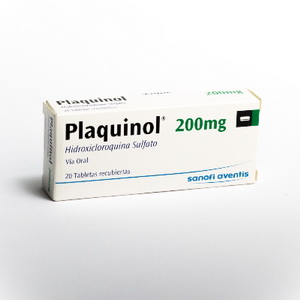
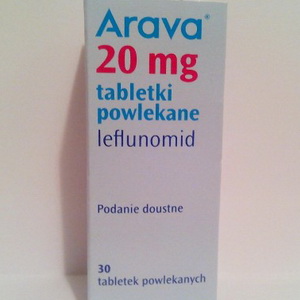
Plaquenil, Arava,

Cytoxan.
They are prescribed, as a rule, to patients who are at risk of permanent damage to the joints.
Effective hormonal drugs for rheumatoid arthritis and arthrosis
Hormonal drugs for arthritis are represented by corticosteroids - medicines that mimic the action of the hormone cortisol, which is produced by the adrenal glands. Such hormonal preparations for arthritis and arthrosis as Celeston, Prednisolone, Diprospan, Metipred are widely used. With the help of corticosteroids, inflammatory processes that occur in the joints can be controlled.
Corticosteroids are effective drugs with rheumatoid arthritis, affecting both the upper and lower extremities. They are available in a variety of pharmacological forms - tablets, ointments, gels, potions, sprays, drops, injections. The treatment of arthritis and arthrosis with the use of corticosteroids is indispensable for actively progressive forms of joint diseases. They are also prescribed to patients suffering from autoimmune diseases in order to suppress the response of the immune system.
Preparations for the treatment of psoriatic arthritis of the fingers, toes and hip joints
Psoriasis mainly affects the skin, but sometimes the pathological process can spread to the joints, in which case psoriatic arthritis develops. Among the drugs for the treatment of psoriatic arthritis are NSAIDs, glucocorticosteroids and analgesics.
Such drugs are used for psoriatic arthritis, such as:

The use of these drugs in the treatment of arthritis of the fingers and toes greatly facilitates the life of the patient. Such drugs for the treatment of arthritis have proven themselves well. hip joint –

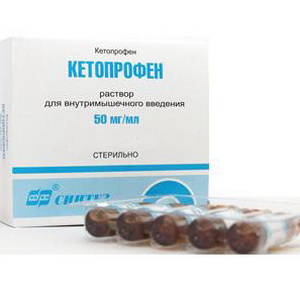
Diclofenac, Ketoprofen,
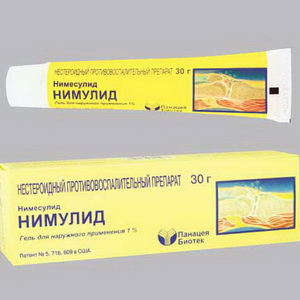
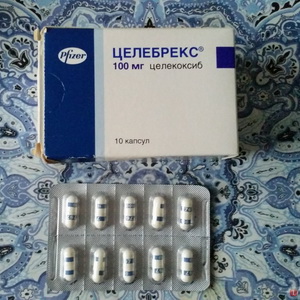
Nimulide, Celebrex.
Drugs for reactive arthritis and gout: Stop Arthritis and other remedies
There is such a form of joint disease as reactive arthritis, the cause of which is a violation in the functioning of the immune system. As a rule, the disease occurs as a result of a previous infection.
Such drugs are used for reactive arthritis, such as:

What are the drugs for arthritis for gout when joint damage is caused by this disease? In the treatment of gouty arthritis, the following drugs are used -
The choice of drug depends on the severity of the disease, the presence of other concomitant diseases, the risk of side effects and the need for other medications. The treatment of arthritis depends on the successful actions of the doctor, as well as, to a large extent, on the patient himself. Regular medication, timely feedback from a doctor, strict adherence to recommendations can greatly improve the quality of life of the patient.
The main groups of drugs used in the treatment of arthritis are: painkillers and non-steroidal anti-inflammatory drugs, glucocorticosteroids, basic therapy drugs, chondroprotectors, immunomodulating drugs, vitamins and minerals.
Painkillers (analgesics)
Analgesics relieve pain, but not inflammation, in contrast to non-steroidal anti-inflammatory drugs (NSAIDs). Most often they are prescribed in the treatment of osteoarthritis and some other painful, but non-inflammatory forms of arthritis. Such medicines may contain paracetamol, aspirin, codeine, or a combination thereof. With the proper use of these drugs, side effects rarely occur. In any case, you should not exceed the dose recommended by the doctor and use the drug for a long time without consulting a doctor.
Nonsteroidal anti-inflammatory drugs
NSAIDs are used to relieve inflammation and swelling, reduce pain and stiff joints. This is the largest and most widely used group of drugs for the treatment of arthritis; more than 40 medicinal items are included in the class of non-steroid drugs. They effectively relieve the symptoms of arthritis, but cannot slow down the joint destruction process.
NSAIDs block the release of prostaglandins and hormone-like substances that cause inflammation and pain. If therapy with non-steroidal anti-inflammatory drugs is effective, already within a week, patients feel an increase in joint mobility and a decrease in pain. The most popular NSAIDs are Ketorolac (Ketanov), Diclofenac (Voltaren, Ortofen, Naklofen), Indomethacin, Analgin, Piroxicam, Naproxen, Ibuprofen and Meloxicam.
Side effects of these drugs are expressed in erosive and ulcerative lesions of the stomach and inhibition of platelet formation. In addition to gastrointestinal tract damage, nephrotoxic, hepatotoxic, ototoxic and other side effects are also characteristic. To improve tolerance of a decrease in the effect on the gastrointestinal tract, it is recommended to combine the use of nonsteroids with gastroprotectors, dose reduction, the use of enteric-soluble forms, the transition to intramuscular, rectal or local administration.
Chondroprotectors
These are tools that improve the structure of cartilage. They help strengthen cartilage and thus slow the progression of arthrosis. Chondroprotectors are taken in long courses, at least 3 months. It is necessary to carry out treatment 2 times a year.
Chondroprotectors are in capsules, tablets and powders (Structum, Teraflex, Artra, Chondrosamine), in the form of ointments (Chondroitin Akos, Chondroart, Chondroxide). In hospitals, intra-articular injections of Ostenil and Fermatron are carried out. Supplements - chondroprotectors ("Honda Capsules", "ArthroStopPlus"), in contrast to drugs, have a lower content of active substances.
Vitamins and minerals for joint diseases
Vitamin monopreparations (folic acid, nicotinic acid, nicotinamide, etc.) or antioxidant complexes (Triovit, Tri-Vit, Antioxicaps Neurobeks, Neurorubin, Milgamma) are also used in the treatment of arthritis. Essential minerals for joint diseases - sulfur, selenium, zinc, manganese, copper, molybdenum. Immunomodulatory drugs are used to treat severe forms of arthritis.
Treating arthritis is the challenge of even the most qualified rheumatologist. In this article, we will consider modern methods of therapy. different forms joint inflammation.
Innovative solutions in rheumatology are present, but they are introduced into the practice of doctors only in some developed countries.
Statistics have shown that biological preparations are several times superior to traditional medicines used to treat the disease by our doctors. So, first things first.
The classic treatment for rheumatoid arthritis
The classical treatment of rheumatoid arthritis is based on the use of non-steroidal anti-inflammatory drugs (ibuprofen, aspirin) and disease-modifying rheumatic factors (, sulfasalazine).
Among the existing anti-inflammatory drugs, even a qualified doctor is difficult to choose an effective medicine with minimal side effects. As a result, the approach to treating the disease in each patient is individual.
The classical treatment of arthritis is comprehensive and is based on the following methods:
- Restriction of labor and reduction of the load on the damaged joint (bed rest);
- Increased dietary content of phosphorus, calcium and vitamin D3 (eating fish, dairy products);
- In case of ankle joint, the appointment of orthopedic insoles and correct shoes (to prevent flat feet) is rational;
- NSAIDs are taken strictly on the recommendation of a doctor (they provoke an intestinal ulcer) together with gastric secretion blockers (misoprostol, omeprazole).
Popular Anti-Inflammatory Arthritis Treatments
Let's review some popular anti-inflammatory drugs.
Ibuprofen in experimental studies has shown high efficiency in eliminating inflammation with minimal side effects. The drug can be used to treat chronic joint pain. In acute pain, it must be combined with analgesics (analgin, baralgin). Ibuprofen (nurofen) has been used in the treatment of arthritis for more than 40 years and during this time did not cause serious complications in patients. In many countries of the world, it is dispensed in pharmacies without a doctor’s prescription.
You need to understand that the advantage of the therapeutic effect over the complications when taking the medicine is observed only when using less than two weeks in a daily dose of not more than 3 tablets.
Ketoprofen is considered by many rheumatologists to be a quality alternative to ibuprofen. The positive therapeutic effect of this drug on arthritis is due to the peculiarity of its molecular structure. The drug’s molecules penetrate well into inflammatory tissues, accumulate in intraarticular fluid, and therefore provide a long therapeutic effect.
Of great importance is the ability of ketoprofen to penetrate into the brain through the blood-brain barrier. Due to these properties, the drug can be used in the treatment of arthritis with concomitant lesions. nerve fibers. Some studies provide evidence of the activation of the serotonergic system of the brain by the drug, which reduces irritability in patients with asthenovegetative syndrome that occurs against the background of autoimmune arthritis.
Attention! Ibuprofen and ketoprofen are not without side effects that are characteristic of all non-steroidal anti-inflammatory drugs (NSAIDs), so they need to be taken in short courses (up to 2 weeks) with subsequent breaks.
B vitamins for joint inflammation
Numerous studies have shown an increase in the effectiveness of the treatment of spondylitis (inflammation of the joints of the spine) with the combined use of NSAIDs and B vitamins:
- Thiamine (B1);
- Pyridoxine (B6);
- Cyanocobalamin (B12).
In chronic diseases of the spine, such drugs are prescribed to improve the functionality of the nervous system, restore metabolism, and reduce pain. Clinicians using B vitamins in patients with arthritis of the joints, including, note an acceleration in the timing of achieving remission of the disease when combining these drugs with non-steroidal drugs.
Neurobinone is a medicine containing therapeutic dosages of vitamins B1, B6 and B12. Its positive effect on joint inflammation is due to the following properties:
- Thiamine reduces nervous irritability, so joint pain is reduced;
- Pyridoxine improves the metabolism of sphingolipids (substances necessary for the functionality of nerve fibers), stimulates the flow of nutrients into the osteoarticular system by improving the metabolism of amino acids;
- Cyanocobalamin is necessary for the normal functioning of red blood cells, improves the activity of brain neurons.
Thus, it is advisable to supplement the classical treatment of arthritis with non-steroidal anti-inflammatory drugs with B vitamins. This combination will not only accelerate the healing of inflammatory changes in the joints, but also alleviate the condition of a patient who has arthritis complications from the nervous system.
How to treat autoimmune arthritis
Autoimmune arthritis (rheumatoid, juvenile) creates difficulties in treatment due to the fact that they arise against the background of the formation of antibodies against the cells of one's own body. There are drugs, for example, methotrexate or sufasalazin, which can stop this process, but the blockade of the synthesis of immunoglobulins will lead to the body being unable to fight viral and bacterial infections. Against this background, treatment with antirheumatic disease-modifying drugs can be carried out only with severe forms of arthritis and only moderate doses of anti-blocking drugs.
Methotrexate is considered the gold standard in the treatment of autoimmune arthritis. It has an immunosuppressive effect in lower dosages than its analogues, therefore it is less safe for the human body. The tool belongs to the group of folate blockers, therefore, to reduce side effects, it is rational to use folic acid in a dose of up to 5 mg per day with it.
There is an opinion that sulfasalazine is not significantly different in toxicity from methotrexate, therefore it is also prescribed for rheumatoid arthritis. However, methotrexate is more common in autoimmune joint inflammation. Only when the effectiveness of treatment with this drug is not observed, are combined schemes used:
- Methotrexate with sulfasalazine;
- Methotrexate and hydroxychloroquine;
- Methotrexate and leflunomide.
Does immunomodulation help with arthritis
Immunomodulation for arthritis helps by suppressing antibodies that affect the articular surfaces. Obviously, their use is rational only for autoimmune inflammation.
The use of this method is based on the fact that hormones of the adrenal cortex (corticosteroids) are able to inhibit immunity. With their use, the production of immunoglobulins against their own cells is reduced.
Therapy with these drugs has a large number of side effects, therefore, it is carried out when absolutely necessary.
An analogue of glucocorticoid hormones is cyclosporine. This medicine has fewer side effects. The choice of an immunomodulator is the task of a qualified specialist. If the dose or duration of the use of prednisone or cyclosporine is incorrect, the patient will have serious hormonal disorders and complications from the internal organs.
Biological drugs for arthritis - the latest "fashion peep"
Biological drugs effectively treat arthritis in developed European countries. Due to the high cost, our inpatient medical institutions about such medicines, so far "have only to dream."
What are biological products
Biological preparations contain biological agents that act on important pathogenetic links of diseases. For example, with rheumatoid arthritis, bacteriophages are used that prevent the formation of inflammatory substances (cytokines and tumor necrosis factor).
Some drugs of this type eliminate the toxicity of blood that occurs with bacterial infections (including streptococcal). Anti-CD4 agents are widely used in Israel. They block the activity of T-lymphocytes, which are the main source of antibody formation in rheumatoid arthritis. After binding of the phage to the lymphocyte, immunoglobulins that destroy joint tissues do not form.
There are bacteriophages that act on other parts of the pathological process. For example, biological tissue suppression agents (TIMPs) block the activity of tissue collagenases (enzymes that destroy cartilage) If such biological preparations are used for a long time, then the conversion of arthritis into is prevented, which is always observed with prolonged inflammation of the joint.
However, in practice, the use of TIMPs has side effects. Blocking collagenases is accompanied by the appearance of synovitis of tendons, since enzymes do not remove the dead epithelium of the inner lining of the ligaments.
How to treat arthritis with biological drugs
In some scientific institutions of our country, RAMS treats children with rheumatic diseases with biological agents. More precisely, so far only one drug is used for these purposes - Enbrel (etanercept). This tool has shown good efficacy in the treatment of rheumatoid arthritis in children in practice in the United States and Europe.
Features of the treatment of rheumatoid arthritis with etanercept:
- High efficiency with a minimum of side effects;
- Subcutaneous administration 2 times a week;
- Not addictive;
- May be prescribed to children from 4 years old;
- The lack of effect of the remedy for forms of the disease insensitive to NSAIDs and immunomodulators.
Obviously, the appearance of biological agents does not fundamentally change the traditional idea of \u200b\u200btreating autoimmune joint inflammation. Such drugs should be used in combination with classical means to increase the effectiveness of therapy and reduce the duration of the disease.
In 2011, another biological drug appeared in Russia - Actemra (tocilizumab). It is intended for the treatment of juvenile arthritis in children older than 2 years with an average and high activity of the pathological process. The therapeutic effect of the drug is aimed at blocking the receptors for one of the mediators of inflammation - interleukin 6 (IL-6). This substance activates the inflammatory process, therefore, when its activity is inhibited, the swelling in the joint decreases. The drug with regular use allows you to return the patient to work, but, theoretically, increases the risk of malignant tumors. Interleukin 6 provokes an inflammatory process so that the body can get rid of destroyed tissues, which, without destroying the immune system, can turn into a malignant tumor by acquiring the ability to uncontrolled reproduction.
Another biological drug used in the treatment of rheumatoid arthritis is rituximab. It contains antibodies to B-lymphocyte receptors obtained by genetic engineering. When using the drug, lymphocytes responsible for the production of antibodies to articular tissues die, but the rudimentary forms of cells responsible for the immune response are not destroyed. This mechanism of action is due to selective damage to lymphocytes containing CD-20 receptors.
Enzymotherapy for Arthritis
Enzymotherapy is based on the proven fact that any pathological process at the cellular level leads to disruption of the interaction between intracellular and intercellular enzyme systems. The condition leads to a paradoxical reaction, inadequate hyperactivity and the suppression of the physiological mechanisms of intracellular metabolism. Similar changes are also observed with viral and bacterial infections. Disruptions at the cellular level can exist in humans and with a genetic predisposition.
Obviously, such pathological changes need to be restored, therefore, in Israel, in the treatment of inflammatory joint diseases, doctors prescribe enzyme preparations.
The most popular means of this group are phloenzyme and wobenzym. They are prescribed primarily for juvenile chronic arthritis in children.
Composition of Wobenzym:
- Chymotrypsin;
- Pancreatin
- Lipase;
- Amylase;
- Papain;
- Routine;
- Bromelain.
It is obvious that the multicomponent composition of the drug is able to normalize most of the pathological changes in the tissues that occur during autoimmune inflammation.
Arthritis is a multifaceted definition that includes several nosological forms with different causes and pathogenesis. As a result, before treating the disease, it is necessary to find out not only the main pathological links, but also to suggest changes at the cellular level. A modern rheumatologist must have good knowledge not only in the field of pharmacology, but also pathophysiology in order to use effective innovative solutions in the treatment of rheumatoid diseases.
Joint inflammation, i.e. arthritis, is the most common disease of the musculoskeletal system.
Arthritis is accompanied by pain, swelling, motor restrictions, which impedes the implementation of many daily activities.
With arthritis, long-term treatment is required, because with inaction, the condition of the joints worsens greatly. As a rule, the main medicine for arthritis is pills, that is, medications are the basis of treatment.
Arthritis pills are one of the elements of a comprehensive treatment. There is no miracle cure for arthritis that would completely eradicate the disease, however, properly selected drugs will effectively remove the symptoms, slow down the progression of arthritis and prevent complications.
Treatment involves the use of groups of drugs:
- muscle relaxants
- chondroprotectors
- basic therapy
- painkillers
- non-steroidal anti-inflammatory drugs - and tablets,
- glucocorticosteroids - corticosteroids.
Nonsteroidal anti-inflammatory drugs (NSAIDs)
NSAIDs include:
- indomethacin
- ketoprofen
- diclofenac
- meloxicam.
NSAIDs can cope with painful symptoms. They reduce the synthesis of prostaglandins, substances that regulate pain and inflammation.
These drugs increase the patient's mobility of diseased joints, which significantly improves overall well-being and quality of life.
During the acute phase, injectable formulations are most effective.
After removal of the main symptomatology, tablets are included in the course of treatment, as the main medicine for arthritis.
Painkillers
Fixed assets against pain:
- paracetamol,
- ibuprofen
- aspirin,
- analgin.
The use of painkillers, that is, analgesics, for arthritis is only a way to reduce the symptoms of the disease. Non-narcotic drugs relieve pain well and rarely have side effects, however, unlike NSAIDs, analgesics are not anti-inflammatory drugs.
Painkillers are used when there is a pronounced pain in the joints, for example, with the development of osteoarthritis.
Glucocorticosteroids
This group includes:
- prednisone
- hydrocortisone
- dexamethasone
- betamethasone.
GCS or glucocorticosteroids are hormonal anti-inflammatory drugs that are used in the form of intraarticular injections during an exacerbation of the disease. GCS quickly relieve pain, stop the inflammatory process and improve joint mobility.
In rare cases, the doctor may prescribe GCS in the form of tablets. The dosage of the drug is constantly decreasing as the patient's condition improves.
Prolonged hormonal treatment can cause serious disorders, such as:
- cataract,
- osteoporosis,
- glaucoma,
- adrenal dysfunction.
Basic Therapy
These are the following drugs:
- arava
- plaquenil
- rheumatrex
- lied
- imuran
- neoral.
The listed funds can not only alleviate symptoms, they have anti-inflammatory effects, and also inhibit the formation of arthritis. These medications prevent bones from deforming.
The action of the funds is based on immunosuppressive activity. The main manifestations are anti-inflammatory effects on the body.
It is used in some varieties of the disease, for example, with rheumatoid arthritis. One common drug is sulfasalazine. This remedy has anti-inflammatory and antimicrobial functions.
Sulfasalazine in its structure is a combination of 5-aminosalicylic acid and sulfapyridine. The course of treatment lasts 6 weeks. First, sulfasalazine is taken at 500 mg per day, then the amount increases. To avoid side effects, sulfasalazine should be consumed with plenty of water.
If the patient has an allergy, asthma, as well as impaired liver and kidney function, sulfasalazine should not be taken. For pregnant women and nursing mothers, sulfasalazine is also strictly contraindicated.
Sulfasalazine has a long decomposition process, it accumulates in the blood, which can be expressed in the following symptoms:
- abdominal cramps
- migraine,
- anorexia,
- hemolytic anemia.
If side effects occur, you should consult a doctor and, if possible, change sulfasalazine to another drug.
Sulfasalazine and other basic drugs act slowly, so you should not expect an obvious effect right away. Drug use can last at least two months.
While waiting for results from basic therapy, NSAIDs and glucocorticosteroids can be prescribed in parallel for a faster effect.
This includes:
- midocalm
- sirdalud
- baclofen.
Muscle relaxants are arthritis medications that eliminate muscle cramps in the face of painful joints. Pain is removed in the area of \u200b\u200bthe affected joint, blood circulation improves, muscle tension goes away.
Muscle spasm is a kind of protective reaction of the joints, which protects them from strong pressure and deformation.
Thus, these funds must be used very carefully - such drugs for arthritis are needed only in combination with chondroprotectors.
Chondroprotectors
The most common drugs are:
- don
- arthra
- structure
- chondroitin.
The use of chondroprotectors (glucosamine sulfate and chondroitin preparations) inhibits the development of arthritis and restores joints. Chondroprotectors accelerate the healing of cartilage surfaces of joints, stimulate the release of joint fluid.
These drugs act slowly, so the course of treatment can last from 0.5 to 1.5 years.
Proper medical treatment, begun on time and combined with physiotherapy, massage and a healthy lifestyle, will make it possible to improve the condition of joints and the body, allowing you to return to your usual daily activities.










